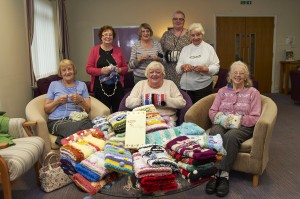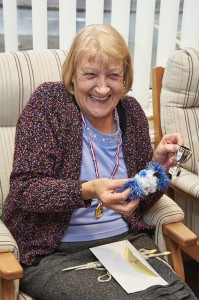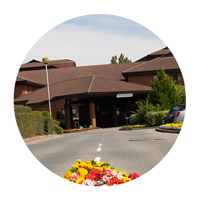Who is the Trust’s waste manager and what are their contact details?
Tony Cressey tony.cressey@heartofengland.nhs.uk
How much is spent on clinical waste per annum? (£)
£585,000
How many tonnes of clinical waste are sent for alternative treatment (last financial year/12 months if possible)?
833 tonnes
How many tonnes of clinical sharps waste are produced of per annum?
200 tonnes
How many tonnes of offensive waste is produced per annum?
395 tonnes
How many tonnes of waste is sent for landfill/waste to energy?
1269 tonnes waste to energy
How many tonnes of waste is sent for recycling?
863 tonnes
When does the domestic waste and recycling contract expire?
1st June 2018
Who currently provides the domestic and recycling waste services?
Birmingham City Council, WastCare, Rapide, DS Smith
Who currently provides the clinical waste services?
SRCL
When does the clinical waste contract expire?
1st June 2018
How much is spent on domestic waste per annum? (£)
£130,000
How much is spent on recycling waste per annum?
£71,000
How many tonnes of food waste is segregated and recycled per annum?
The Trust does not segregate food waste.
How much is spent on food waste recycling per annum? (£)
N/A
How much does the Trust spend on sharps containers per annum? (£)
£282,172
Who currently supplies the sharps containers to the Trust?
Daniels sharps and SRCL BioSsytem is included in the waste disposal cost.
Does the trust use e-learning for waste management?
Yes
Does the trust have its own procurement department?
Yes
Who is the infection control lead and what is their email address?
Gill Abbott, Lead Infection Prevention and Control Nurse. Gill.abbott@heartofengland.nhs.uk
Who is the procurement lead and what is their email address?
Julian Ingram, Head of Procurement. Julian.ingram@heartofengland.nhs.uk
Who is environmental lead and what is their email address?
John Sellars, Director of Asset Management. john.sellars@heartofengland.nhs.uk
Who is health and safety lead and what is their email address?
Sara Sharratt, Health and Safety Manager. Sara.sharratt@heartofengland.nhs.uk
Who is the education lead and what is their email address?
Chris Berry, Deputy Workforce Director and Acting Head of Education. Chris.berry@heartofengland.nhs.uk
Is the waste contract linked to a procurement framework?
No
How many children’s / paediatric operations have been undertaken within the last year in the trust? 1,962
The total includes the number of operations carried out under paediatrics and paediatric surgery specialties between 01/12/2015 – 30/11/2016. This includes elective and emergency surgeries as well as minor procedures i.e. injections.
Within the trust, which of the hospitals undertake paediatric surgeries? Birmingham Heartlands Hospital, Good Hope Hospital and Solihull Hospital.
Of these surgeries, how many required the patient to be in the Prone / Face Down Position? One
Can you please advise if the trust performs Bronchial challenge testing? Yes
If the trust does perform these tests could you also advise
1) The number of tests performed in the last 12 months? 650
2) Which products are used to perform the test?
a. Methacholine
b. Mannitol (Osmohale)
How much money has the Trust spent on cyber security measures in the following financial years:
2016-17 (to date, 21 December) £132,200
2015-16 £135,572
2014-15 £135612
2013-14 £130,068
2012-13 SCC; £122,138.57
How many cyber-attacks has the Trust experienced in the following financial years:
2016-17 Two
2015-16 One
2014-15 None
2013-14 None
2012-13 None
How were each of these cyber threats dealt with?
PC removed from network and remedial action taken
Email attacks blocked by email filter
Device identified and cleaned.
1. Please could you provide me with details of any outstanding individual medical bills for foreign patients using maternity services within the trust.
Please see attached document FOI 4938
2. Within this, could you please include the dates that the care was provided and the nationality of the patient.
Please see attached document FOI 4938
3. Also, please can you tell me if debts are written off or passed on to debt recovery services after a certain amount of time and how long that is.
Debts are only written off when we have exhausted all possible avenues of collection that is both economic and cost effective for the Trust. We do not usually pass overseas debt to agencies as it is very costly the timescales involved are extremely long and the success rate is very poor. We do however lodge details of the debt with HM Borders and have found this a cost effective method of collection.
1) How many females have you treated in connection to/relating to/as a result of FGM/C (female genital mutilation or cutting) practices since 2013/14?
941
2) Please can you break your answer down by financial years:
– – 2015/16: 299
– – 2014/15: 347
– – 2013/14: 271
3) Can you break down and categorise the numbers by the females’ ages? Ideally in these age brackets: i. 0 – 9 ii. 10 – 18 iii. 19 – 27 (and continue by nine-year age brackets)
| 2015/16 | 2014/15 | 2013/14 | |
| 10-18 | 2 | 2 | |
| 19-27 | 86 | 70 | 8 |
| 28-36 | 141 | 129 | 11 |
| 37-45 | 53 | 42 | 4 |
| 46-54 | 3 | 2 | |
| Not known | 14 | 102 | 272 |
| Total | 299 | 347 | 295 |
 A member of staff from Good Hope Hospital and volunteers from the Lingard House ‘knit and natter’ group in Walmley, have worked tirelessly to knit 250 twiddlemuffs for dementia patients in just under a year.
A member of staff from Good Hope Hospital and volunteers from the Lingard House ‘knit and natter’ group in Walmley, have worked tirelessly to knit 250 twiddlemuffs for dementia patients in just under a year.
Twiddlemuffs are hand muffs decorated with ribbons, large buttons or textured fabrics that patients with dementia can twiddle in their hands whilst on the elderly wards at Heartlands, Solihull and Good Hope Hospitals. People with dementia often have restless hands and like something to keep them occupied. The twiddlemuffs provide a source of visual, tactile and sensory stimulation at the same time as keeping hands snug and warm.
An avid crocheter and group support manager for women’s and children’s services at Heart of England NHS Foundation Trust, Angela McKenna-Hylton, set herself a target for making 100 in a year and has more than doubled her target with the help of the Lingard House ‘knit and natter’ group. Dedicated knitter, Mrs Audrey Price, knitted 100 herself alone.
Angela said: “I am delighted with the number knitted! I am so grateful to the ‘knit and natter group’ for their help in smashing our target. Twiddlemuffs are an excellent way of helping to combat the restlessness and agitation that may be experienced by patients with dementia. This project is part of a wide range of work we are doing to support our patients with dementia and we would love to have your help.”
The ‘knit and natter’ group are making more twiddlemuffs but are running short of textured buttons/beads and double knit wool – preferably fluffy and or textured wools, so if you’d like to make a donation to these avid knitters, please drop them at Linguard House, Fox Hollies Road, Sutton Coldfield, B76 2RJ.
What is the Trust’s annual spend on anti-TNF drugs (most recent year available)?
£8,932,671
How many patients has the Trust treated with anti-TNF drugs in the last 12 months?
1,147 patients
What is the % split of anti-TNF patients by the following channels:
| Type | Percentage |
| Homecare | 57.57% |
| Inpatient | 16.61% |
| Outpatient | 25.82% |
How many patients has the Trust treated with the following conditions in last 12 months:
| Condition | Number of Patients | Clinical codes |
| Rheumatoid Arthritis | 2705 | M06.* |
| Crohn’s Disease | 2049 | K50.* |
| Psoriasis | 638 | L40.* |
Are there any gain share agreements in place between the Trust and CCGs for anti-TNF biosimilars?
No
Trust Guidelines for Venous Thromboembolism (VTE) Prophylaxis in Surgical Patients. I would like you to include all surgical specialities at your trust, and specific guidelines you have for extended VTE prophylaxis in patients undergoing surgical procedures.
Please see attached guidelines for orthopaedic and non-orthopaedic surgery. Thromboprophylaxis-Orthopaedic Thromboprophylaxis-surgery
In addition, I would like to know the approximate number of Colorectal resections performed at your trust in each year.
386 based on the following codes
H33.* (excision rectum)
H11.* (excision colon)
G69.* (excision ileum)
How many registered children’s nurses (Whole Time Equivalent) are employed at your organisation? Please list by clinical area.
Please see Attachment 1
How many support workers (Whole Time Equivalent, bands 1-4) are working in your children’s service? Please list by clinical area.
Please see attachment 1
How many nurses (Whole Time Equivalent) deliver your community children’s nursing service? Please list by clinical area.
Please see attachment 1
How many clinical specialist children’s nurses do you have in your service? Please list their clinical specialisms, e.g. 1x haematology; 2x epilepsy.
Please see attachment 1
How many advanced neonatal nurse practitioners do you have in your service?
Please see attachment 1
How many advanced paediatric nurse practitioners do you have in your service?
Please see attachment 1
Do you have transition (children’s to adults’ services) nursing roles? If yes, how many? Do any have clinical specialisms? If so, please list their clinical specialisms, e.g. 1x haematology; 2x epilepsy.
We do not have general transitional nurses, however we do have a team of clinical nurse specialists that work with children during their transition into adults:-
7 x diabetes nurses
1 nutritional nurse
3 x respiratory nurses
2 x allergy/ immunology nurses
2 x dermatology nurses
2 x HIV nurses
Do you employ a play specialist?
Please see attachment 1
How many inpatient beds are there designated for children and young people? Please provide a number against the following and list by clinical area:
Neonates 48 (Special Care Baby Unit, High Dependency Unit & Intensive Treatment unit )
Children’s 22 (children and adolescents)
Adolescents – see above
What were the key gaps in knowledge and skills within the children’s nursing workforce identified by your most recent Training Needs Analysis or courses commissioned through Non-Medical Education and Training (NMET)?
On-going internal training is in place regarding mandatory and basic skills. Specialised training such as PILS, EPLS and HDU training in place –numbers per year are small due to number of courses than run per year (HDU only twice/ year), staff need to be released for yearly updates for PILS and financial implications. Current education plans are regarding skills/ knowledge regarding recognition of deteriorating child.






